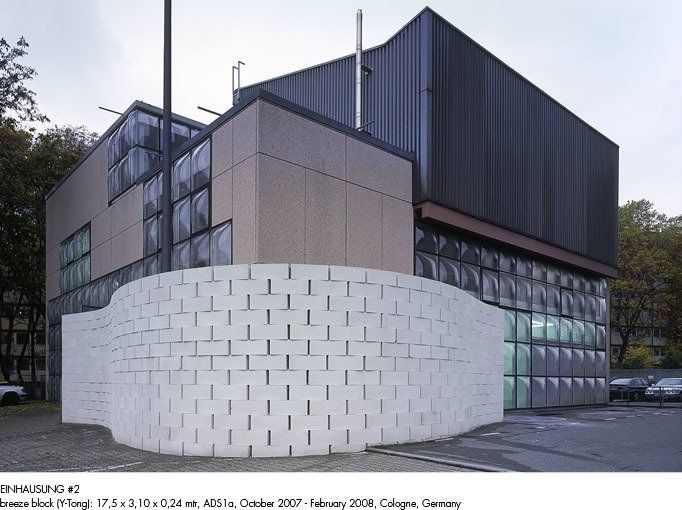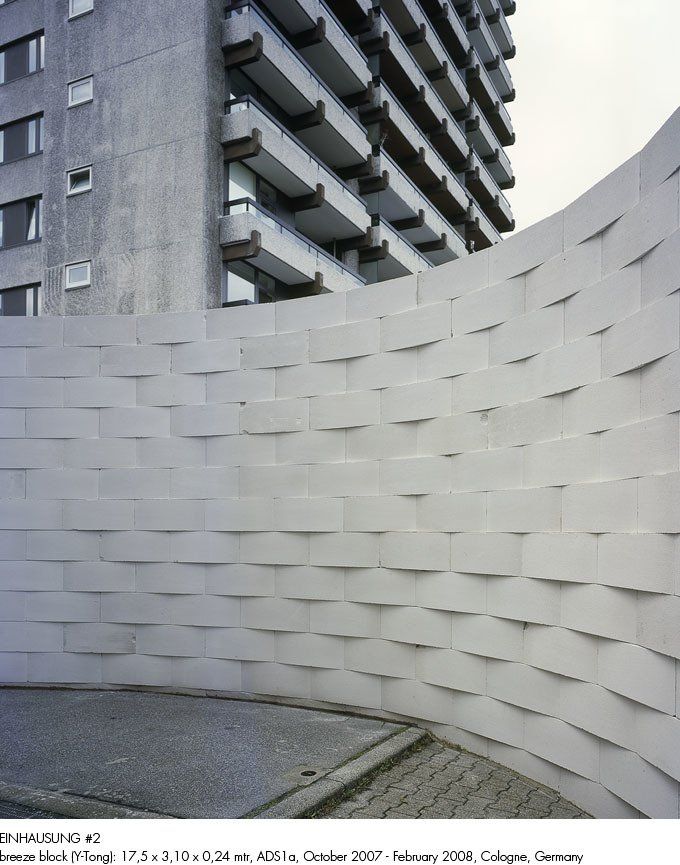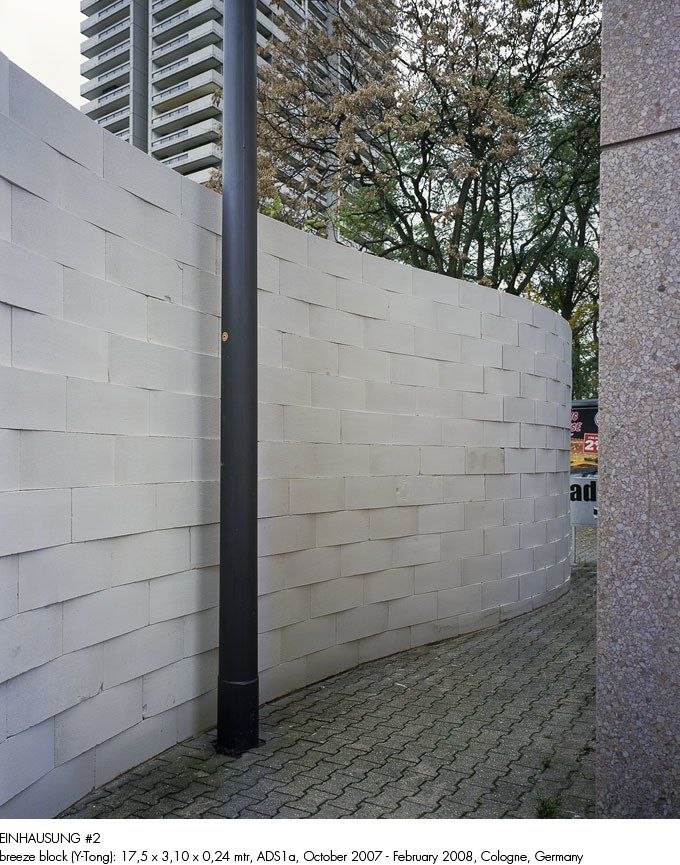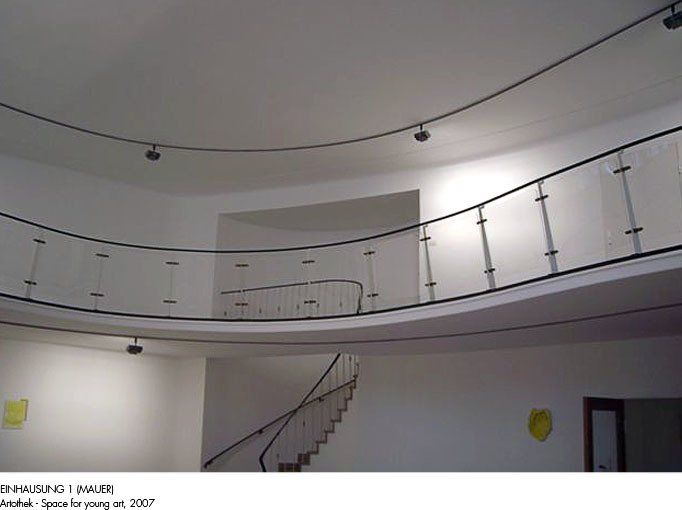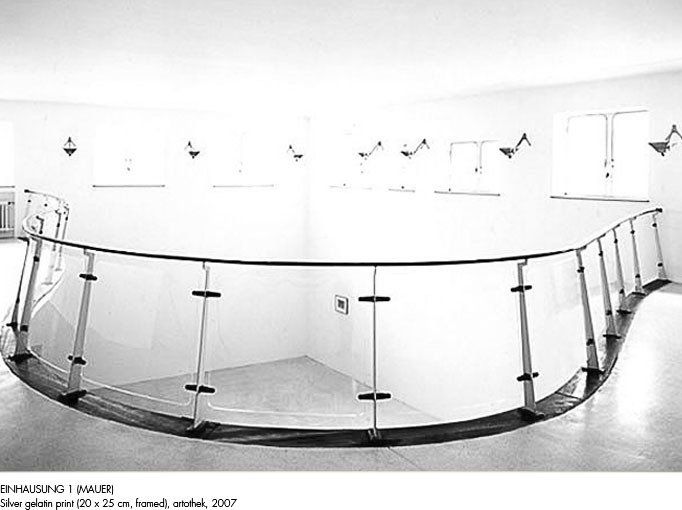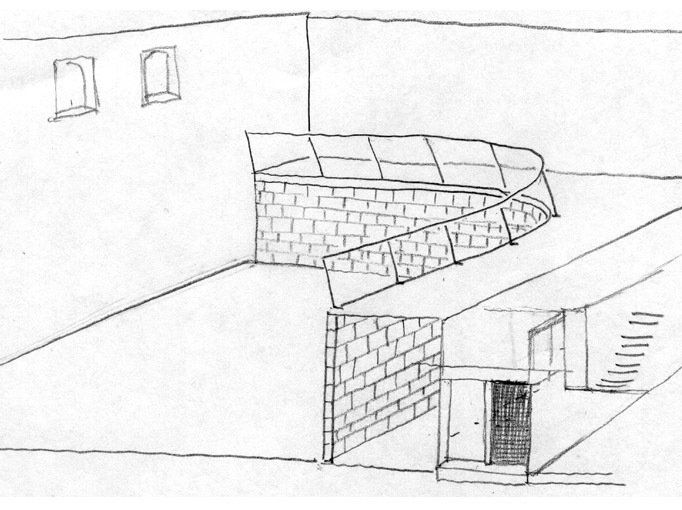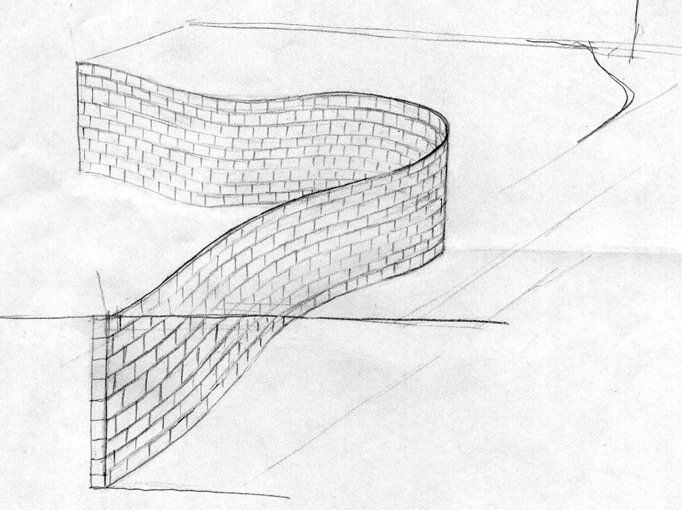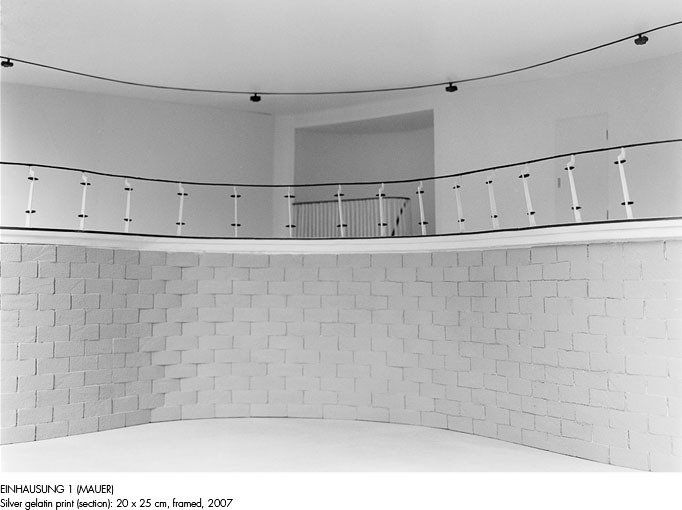EINHAUSUNG 1-2, 2007
Einhausung 1-2, 2007
Mauer: Y-Tong, 1700 x 310 x 24 cm
Fotografie: SW Abzug auf Baryt, 25 x 20 cm, gerahmt (artothek)
Bronze: 80 x 14,5 x 12,5 cm
September - Dezember 2007
(English below)
Die Form der artothek
bestimmt die Arbeit „Einhausung“.
Die durch Kriegseinwirkungen durchbrochene Decke des ersten Stockes reparierte man notdürftig. Der Raum erhielt
seine charakterisierende geschwungene Gestalt.
Ursprünglich sollte die Mauer den Ausstellungsraum von Ausleihe und Arbeitsplatz der artothek
trennen. Der Blick in den Ausstellungsraum wäre nur über die Empore möglich gewesen.
Die Umsetzung scheiterte an multiplen Befürchtungen der Leitung der artothek.
Auf Einladung der Galerie Mirko Mayer und des Galeriehauses „An der Schanz 1a“ konnte
die Mauer als Objekt im öffentlichen Raum realisiert werden.
Die
verwendeten Steine sind eine Sonderanfertigung der Firma XELLA Y-Tong, die ohne Nut und
Feder produziert werden konnte.
Zur Eröffnung der Ausstellung „Einhausung 1-2“ hing einzig eine schwarzweiß Fotografie 20
x 25 Zentimeter groß des Models der artothek in der artothek. Die Position des Fotos an der Wand simulierte
die Kameraposition des Modellfotos.
Nach dem Abriß der Mauer wurde vom Modell der Mauer ein Bronzeguß angefertigt.
Unterstützt durch: XELLA, KLEINER Recycling, Enck-Oswald Architekten, Druckerei Stettner
English version
Enclosure #1-2, 2007
Wall: Y-tong, 1700 x 310 x 24 cm
Photography: B/W print on baryte, 25 x 20 cm, framed (artothek)
Bronze: 80 x 14,5 x 12,5 cm
September - December 2007
The form of the artothek determines the work "Einhausung". The ceiling of the first floor, which had been damaged by the war, was repaired in a makeshift way. The room was given its characteristic curved shape. Originally, the wall was intended to separate the exhibition room from the lending desk and the artothek's workplace. The view into the exhibition room would have been possible only via the gallery. The implementation failed due to multiple fears of the artothek management. At the invitation of Galerie Mirko Mayer and Galeriehaus "An der Schanz 1a" the wall could be realized as an object in public space.
The stones used are a custom-made product by XELLA Y-Tong, which could be produced without tongue and groove. At the opening of the exhibition "Einhausung 1-2" only a black and white photograph 20 x 25 centimetres in size of the model of the artothek hung in the artothek. The position of the photograph on the wall simulated the camera position of the model photo. After the wall was torn down, a bronze cast was made of the model of the wall.
Supported by: XELLA, KLEINER Recycling, Enck-Oswald Architekten, Druckerei Stettner
